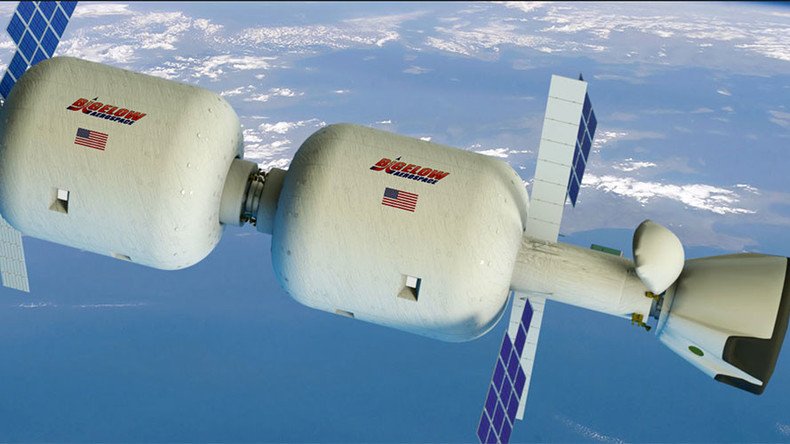Inflatable space modules could lead to new space dwellings

The SpaceX mission, which linked up with the International Space Station at the weekend, was carrying an interesting piece of cargo – a prototype inflatable module that could help open a new chapter in space travel and exploration.
The Bigelow Expandable Activity Module (BEAM) is a 1,400-kilogram structure, which is 3.6 meters long. It is now floating in space, attached to the International Space Station. Although it is only the size of a small bedroom or a one-car garage, it could have a big future in space exploration. Its makers hope to put a much larger model into space soon.
Dragon successfully installed on @Space_Station with the BEAM inside awaiting berthing and deployment pic.twitter.com/KG0H9gPiK5
— Bigelow Aerospace (@BigelowSpace) April 10, 2016
Robert Bigelow, the founder and president of Bigelow Aerospace wants to put the B330 into space. It will be 330 cubic meters in size and the space executive is in talks with NASA about attaching it to the International Space Station.
"In that configuration, the B330 will enlarge the station's volume by 30 percent and function as a multipurpose test bed in support of NASA's exploration goals as well as provide significant commercial opportunities,” Bigelow said in a statement on the company’s website.
.@BigelowSpace and ULA partner to bring new era of commercialization to space! https://t.co/XESKNeddGdpic.twitter.com/4DTfEnrZks
— ULA (@ulalaunch) April 11, 2016
The inflatable module is made out of a Kevlar-type material and other fabrics. The structure needs to be robust in case it comes into contact with any potential space debris. The inflatables are initially folded into the cargo section of the Atlas V rockets and then launched into space, which explains why Bigelow is teaming up with United Launch Alliance – a joint venture between Lockheed Martin Space Systems and Boeing Defense, Space & Security.
Although NASA is planning to test the BEAM for about two years – astronauts will “routinely enter to take measurements” and monitor other aspects, NASA says – those onboard the International Space Station won’t actually spend much time in the structure. They’ll only be inside for roughly three hours at a time every four months.
#BEAM is all packed for its voyage. Ready #ToBoldlyGo to the @ISS. @NASA@NASAKennedy#BEAMmeupNASApic.twitter.com/ORzCx54v2a
— Bigelow Aerospace (@BigelowSpace) April 7, 2016
The inflatable structure is on a two-year trial period and if it proves to be successful, Bigelow plans to follow up with modules that are 20 times larger and could be used as space outposts by research organizations. They could also be utilized as potential accommodation if space tourism ever takes off.
Bigelow mentioned that this is “a potentially enormously important relationship,” to open space to non-government research, commercial endeavors and tourism.
If the prototype proves to be a success, it is even possible that inflatable structures could be used to create space stations of the future.












